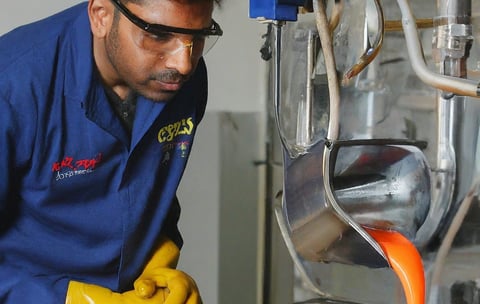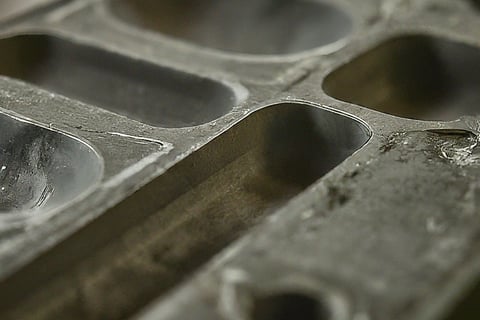The Intricate World of PVC Injection Mold Manufacturing From Design to Production
2/10/20243 min read
Introduction
PVC injection molds are a crucial component in the plastics industry, used to shape and define the characteristics of various plastic products. These molds play a vital role in ensuring the quality of end products, ranging from toys and housewares to automotive parts and medical components.
Materials Used
The manufacturing of PVC injection molds relies on durable materials capable of withstanding high temperatures and intense injection pressures. The most common materials include:
Steel: Steel is widely used for PVC injection molds due to its durability and resistance to corrosion.
Nickel: Nickel offers better corrosion resistance than steel, making it suitable for products requiring high dimensional accuracy.
Aluminum: Aluminum is sometimes used for PVC injection molds due to its lightweight and low cost.
Beryllium copper: Beryllium copper is used in some special applications due to its excellent heat transfer properties, which help to speed up the production process.
Choosing the Right Material
The selection of the appropriate material for PVC injection mold manufacturing depends on several factors, including:
Type of product required: Products with complex shapes require materials with higher corrosion resistance and high manufacturing precision.
Material properties: The properties of the plastic material affect the choice of material used for mold manufacturing.
Production volume: The quantity of products to be produced affects the material selection, with higher production volumes requiring more durable materials.
Manufacturing Stages
The PVC injection mold manufacturing process involves several key stages:
Design: The mold is designed using 3D CAD software, considering the characteristics of the desired product and the properties of the material used.
Manufacturing: The mold is manufactured using precise CNC machines, ensuring that the design steps are followed with high accuracy.
Finishing: The mold surface is treated using various techniques such as coating or polishing, to ensure smooth plastic flow and prevent sticking.
Testing: The mold is tested to ensure its ability to produce high-quality products that meet all requirements.
Manufacturing Techniques
Various techniques are employed in PVC injection mold manufacturing, including:
Electrical discharge machining (EDM): A precise technique used to create molds with complex shapes.
Laser cutting: A fast technique used to create molds with high accuracy.
Computer numerical control (CNC) machining: A traditional technique used to create molds with various shapes.
Factors Affecting PVC Injection Mold Manufacturing
Type of product required: Products with complex shapes require high manufacturing precision.
Material properties: Material properties affect the choice of manufacturing techniques.
Production volume: Production volume affects the selection of manufacturing techniques.
Cost: PVC injection mold manufacturing is a costly process, especially for products with complex shapes.
Accuracy: The manufacturing process requires high accuracy to ensure the quality of end products.
Time: The mold manufacturing process can take several weeks or months.
Challenges in PVC Injection Mold Manufacturing
Cost: PVC injection mold manufacturing is a costly process, especially for products with complex shapes. High-quality materials and precise manufacturing processes require significant investments.
Accuracy: The manufacturing process requires high accuracy to ensure the quality of end products. All mold dimensions must be highly precise to avoid any product defects.
Time: The mold manufacturing process can take several weeks or months, especially for products with complex shapes.
Corrosion: PVC injection molds can corrode over time, especially when used with corrosive plastic materials.
Maintenance: PVC injection molds require regular maintenance to ensure efficient operation.
Solutions to Overcome These Challenges
Utilizing modern manufacturing techniques: Modern manufacturing techniques like EDM and laser cutting can help reduce the cost of PVC injection mold manufacturing and increase their accuracy.
Using high-quality materials: High-quality materials can help extend the life of PVC injection molds and reduce the need for maintenance.
Precise design: Precise design can help reduce the risk of corrosion and improve the efficiency of the production process.
Regular maintenance: Regular maintenance can help ensure that PVC injection molds operate efficiently and prevent breakdowns.
Recent Developments in PVC Injection Mold Manufacturing
3D printing: 3D printing techniques are increasingly being used in PVC injection mold manufacturing, helping to reduce manufacturing costs and increase production speed.
New materials: New materials are continuously being developed for PVC injection mold manufacturing, featuring improved properties such as corrosion resistance and increased service life.
Computer-aided design (CAD) software: CAD software is used to create accurate and efficient designs for PVC injection molds.
PVC injection mold manufacturing is a complex process that requires expertise and high precision. These molds play a vital role in producing various plastic products. The process faces challenges like cost, accuracy, and time, while new solutions and technologies are being developed to overcome these challenges and improve manufacturing efficiency.
Glossary of Important Terms
PVC injection molds: Molds used to shape and define the




Contacts
info@redeagle.shop
